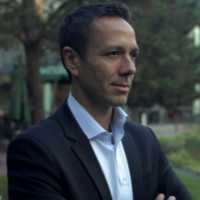Clarity often visits unexpectedly, and it seldom stays for long. Especially when it concerns who we really are.
One morning last winter I was holding on to a ski lift absentmindedly, half enjoying watching Jen and our children being dragged up the mountain ahead of me, and half worrying about a sentence that I kept reshuffling in my mind.
I had gotten up early after a late night writing to meet a looming deadline, and neither hot coffee nor cold sunshine had yet managed to wake me up entirely.
The realization aptly found me there. Attached to my family, to my work, and to a cable pulled slowly upwards by a tired engine. It hit me with absolute certainty. The feeling that this restless, quiet, groggy, loving, worried, sporty bag of being was me.
My true self, I mean. Who I really am. Continue reading





![iStock_000008266083Small[1]](http://www.issg.net/wp-content/uploads/2014/09/iStock_000008266083Small1-150x139.jpg)
